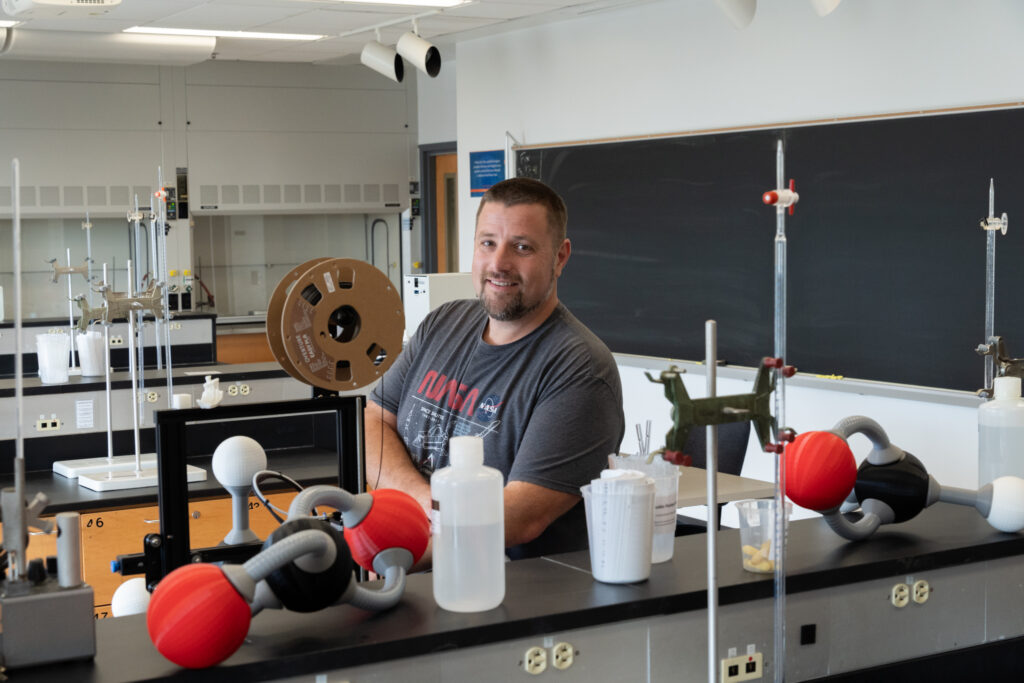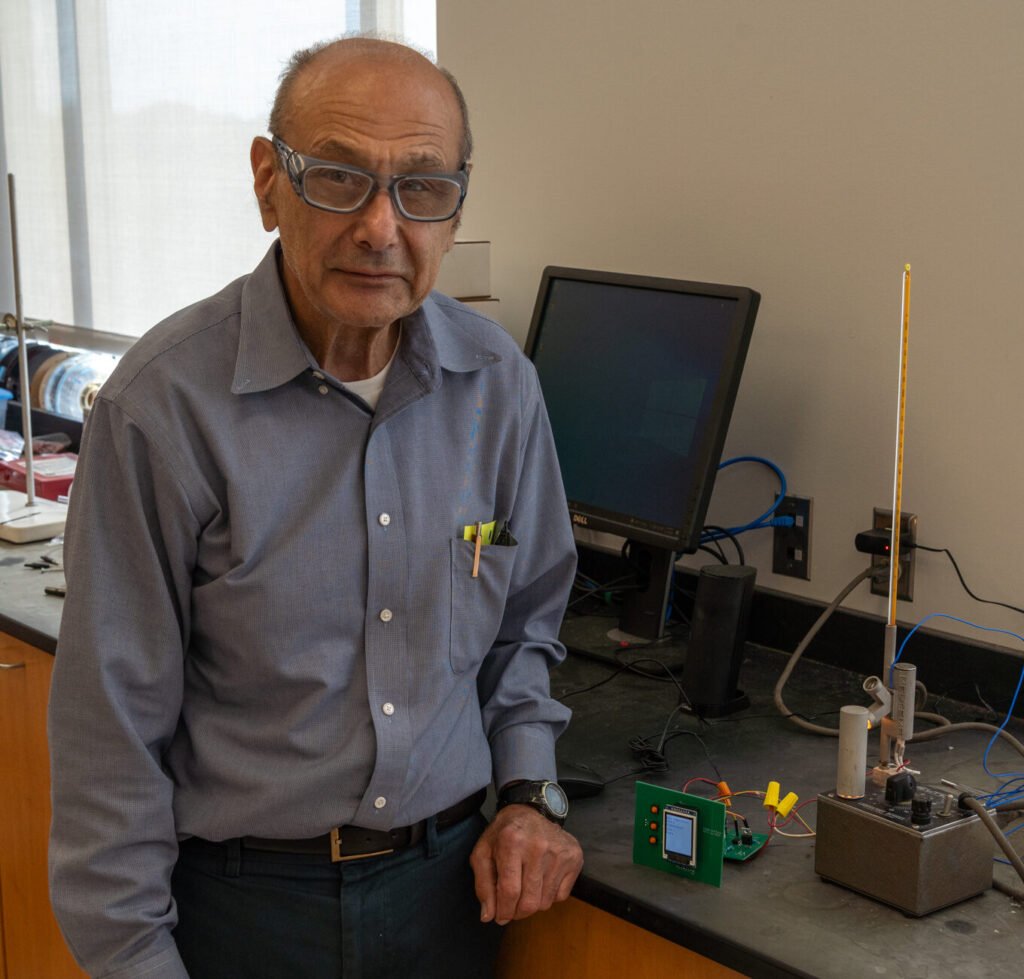The Dynamic Duo – Poppiti and Kuhar
This year, Prof. Kuhar, who has been responsible for general and organic chemistry lab management for many years, marks the start of his eighteenth year teaching and managing labs for our department. Despite these many years of experience, he never stops trying to improve the labs for the betterment of our students’ learning experience.
Prof. Poppiti, likewise, never stops innovating and seeking to improve our students’ lab experience. He has been with the department since 2018 as an adjunct lab instructor and frequently brings new technologies into the lab.
Over the past two years, Prof. Kuhar has spent significant time learning how to effectively 3-D print and devising ways to utilize the technology in the labs. Some smaller projects include devices meant to contain samples on the infrared spectrometers, customized clip-on test tube holders, and a variety of trays that hold small dispensing bottles. Much more significantly, however, are two completed projects: magnetic stir plates and large-scale molecular models that mimic the kits used in general chemistry labs.
Home-Grown Stir Plates
The magnetic stir plates were developed during the 2022-23 school year for use in the general chemistry labs. Prof. Kuhar was inspired by other designs shared online, but ultimately decided to construct his own “minimalist” unit, which has now been shared online for others to freely use. The final design utilizes four printed parts, a neodymium bar magnet, 5 V computer cooling fan, and USB-powered voltage controller to mimic the stirring action of much more expensive units. Gone are the proverbial bells and whistles in place of a small, cheap, functional unit. And the cost savings to the College cannot be ignored: the final (average) price of one of the homegrown stirrers was $11.75, compared to a conservative estimate of $200 or more for professional units. Best of all, because these stirrers were produced in-house with cheap, easily replaceable components, they can be repaired just as cheaply.
Large-Scale Molecular Models
Then, during the summer of 2023, during a lull in other printing activity, Prof. Kuhar kept the printers humming to produce 500% scale models of the Molymod molecular model kits that our general chemistry students become so familiar with during the fall semester. The final designs will allow our lab instructors to show models of a variety of molecular geometries and demonstrate how the model kits are used properly – on a large scale that is much more appropriate for classroom demonstrations.

Thermocouples
Prof. Poppiti and Prof. Kuhar have been collaborating on a project to replace the mercury thermometers used for melting point determinations in our general and organic chemistry labs. Glass thermometers can break and mercury is hazardous, so they worked to design a more rugged and safer alternative. Multiple labs worldwide have reported replacing their thermometers with thermocouple devices with good results, and so Poppiti and Kuhar worked to do the same.
Over the past three years, Prof. Poppiti has been working with small microcontrollers interfaced with a thermocouple to both control the melting point devices (the “Mel-Temps”) and provide digital temperature readouts from the devices. Microcontrollers are small computers on a single chip that are used in electronic devices such as smartphones, fitness watches, microwave ovens, coffee makers, etc. And best of all: they’re cheap, as are the other components. The thermocouples develop a small voltage that increases with temperature following a known formula. He found that a thermocouple amplifier with built-in formula function is able to measure temperatures easily. The data from this function is then provided to students as an accurate temperature measurement they can record in their laboratory data.
The microcontroller also provides students with some new automation functions. No longer do you adjust the voltage manually. Now, you set a target temperature and allow the controller to heat the Mel-Temp for you. Doing so allows students to fine-tune their use of the instrument and obtain a much more accurate determination than in the past. A physical interface includes buttons to increase and decrease this temperature set point, as well as to “store” multiple data points during the measurement process. As of the date of this article, the electronic components are in their final version. All that remains is the design and printing of the 3D-printed housing and final introduction to our general chemistry students, both tasks of which will keep Prof. Kuhar busy for months to come.

